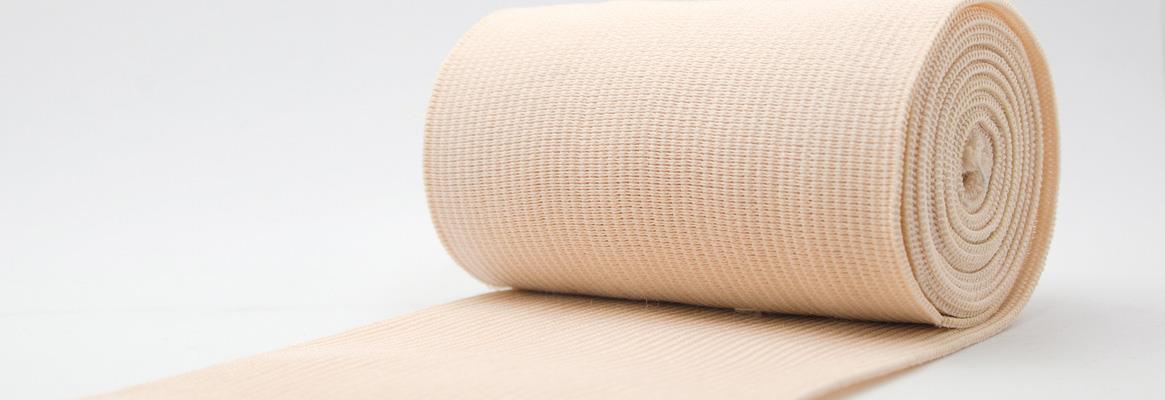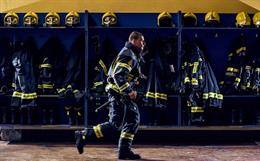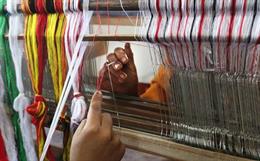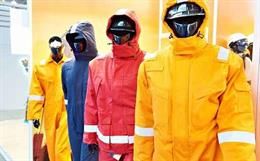The market value ofmedical textiles is predicted to grow at a CAGR of 4.9 per cent by 2025.Fibre2Fashion discusses a crucial medical textile - different types ofinnovative bandages which help heal millions of lives.
Textiles have been used in almost different sectors beyondimagination and the medical sector is one of them. Medical textiles are one ofthe most important and major growth areas within the technical textilesindustry. A number of applications ranging from simple bandage to 3-D scaffoldshave been used as medical products for a large variety of diseases andreplacement of permanent body implants. Medical textile products are not onlyused in the hospital, hygiene, and healthcare sectors but also in hotels,homes, and other environments where hygiene is a must.
Global market sizeof medical textiles
In 2018, the market value of medical textiles was valuedat $16,686.6 million. However, due to advancement in ongoing technologies,greater health awareness, rise in the number of road accidents/ injuries andincrease in lifestyle diseases, ageing population and support from governmentsin the form of funding, the market value of medical textiles is predicted togrow at a CAGR of 4.9 per cent by 2025. Bandages and wound care dressings aremost commonly used in medical sectors because they are affordable and reusable.Bandage/ dressing play a major role in the overall health industry market andare expected to reach $13.5 billion by 2025.
Fibres and structureused for the construction of bandage
A bandage is a piece of cloth or a strip material used tobind a wound or to protect an injured part of the body. Some bandages such asthe butterfly bandage, cervical collar, tubular finger bandage, lumbar/abdominal support and anti- decubitus boots, etc are designed to performspecific functions as per final medical requirements. The fibre and structureused for the construction of bandage vary with design and its functions. Someof the fibres and structure used are given below:
| Types of bandage | Types of fibres used | Type of structure used |
| High-supported | Cotton, viscose, lyocell, elastomeric fibre | woven, nonwoven, knitted |
| Compression | Cotton, viscose, lyocell, elastomeric fibre | woven, knitted |
| Orthopaedic | Cotton, viscose, lyocell, polyester, polypropylene, polyurethane foam | woven, nonwoven |
| Gauge dressing | Cotton, viscose, lyocell, alginate fibre, chitosan | woven, nonwoven, knitted |
The innovative bandage
During the past few years, there have been increasing concerns related to the performance of bandage. Recently many researchers have developed many an innovative medical bandage. Examples are given below:
1. Self-powered electric bandage
Researchers from the US and China have developed a bandage that is easy to wear as an ordinary dressing. The dressing is made of a tiny electrode driven by nanogenerators and can be wrapped around one's torso. When you breathe, the ribcage moves and this movement stimulates the nanogenerators sending low intensity pulses to the wound area. However, it is not fully clear how the pulses help. Scientists say that they increase the viability of fibroblasts and encourage them to line up, which is key to the healing process.
2. Electric bandage
Dr. Scott Sheftel, an associate professor of dermatology at the University of Arizona in Tucson, Arizona says: "Electric bandage looks like a regular bandage, but it doesn't act like a regular bandage". When the bandage is moistened, it stimulates zinc and silver elements on the surface, generates a small electric current that enters the skin to stimulate healing. In clinical trials, the bandage has proved to heal, relieve pain and reduced the risk of infection in hundreds of patients with a chronic disease which have hard to heal wounds.
3. Colour changing compression bandage
Compression therapy is used frequently to treat medical conditions like venous ulcers. In compression therapy, correct pressure needs to be applied. If wrong amount of pressure is applied, it leads to prolonged treatment and causes further injury. Currently, researchers have designed a new type of compression bandage that incorporates a stretchable pressure - sensitive photonic fibre. The fibre is made up of thin layers of transparent rubber materials wrapped around a stretchable core filament. When the bandage is stretched, the fibre colour changes from yellow to green, then blue and the colour can be matched to the desired pressure.
4. Heat- responsive bandages:
According to the International Diabetes Federation, an estimated 415 million people suffer from diabetic foot ulcers across the globe. As the disease develops, it damages the nerve and often patients start losing their ability to fully feel their foot. This means that when a diabetic person cuts his foot, he won't notice it at all and therefore won't treat it. Additionally, patients having high glucose levels with diabetic foot ulcers, develop thickened capillary walls which slows down blood circulation and makes it more difficult for the body to heal cells at the wound site. Therefore, if a patient doesn't treat a wound on time, a tiny injury can result in a life-threatening situation.
A team of North-Western University researchers have developed a bandage constructed from polyethylene glycol (plastic commonly used for medical). This bandage is known as thermo-responsive, because the bandage can be applied to the wound bed in liquid form which gets solidified into a gel at body temperature. Once applied to a wound, it slowly releases the protein called SDF-1; this protein attracts the stem cells to the wound and encourages the growth of new blood vessels to improve circulation, and thus accelerate the healing process. Once the bandage has done its work, cooling it with a chilled saline solution turns it back into a liquid form which makes it easier to remove it than a standard bandage. Moreover, it helps in eliminating wound damage when removed.
5. Spray-on bandage
Spray-on bandage helps in protecting wounds and deliver lifesaving drugs to remote areas where immediate medical care is not available. Scientists created "bottled bandage" using an electrospinning device with a small electric field, which sprays a thin layer of fibres onto the damaged skin like spraying paint on a wall. By applying the mechanism of a spray paint, the device helps to cover wounds and provide controlled drug release over time.
6. Colorimetric bandage
The colorimetric bandage can sense drug-resistant and drug-sensitive bacteria in wounds and treat them accordingly. The new paper-based band-aid (PBB) changes colour from green to yellow when it contacts the acidic microenvironment of bacterial infection if drug-resistant bacteria are present. The colour of bandage turns red through the action of an enzyme produced by the resistant microbes. Comparing traditional photodynamic therapy (PDT) and colour-changing bandage in a wound, a new innovative bandage can reduce off-target side effects, increase therapeutic effectiveness and track drug resistance in real-time with the naked eye.
7. HemCon bandage
The HemCon bandage is made from chitosan, a naturally occurring biocompatible polysaccharide. Due to the polycationic nature of chitosan, it attracts red blood cells and platelets, which possess a negative charge. Through the ionic interaction, the red blood cells and platelets are drawn towards the bandage and form a strong seal at the dermal wound site. This supportive primary seal allows the body to trigger its coagulation pathway effectively, forming organised platelets. The platelets and red blood cells continue to be drawn towards the bandage and travel up the access tract to strengthen the initial seal. Thus, HemCon dressings are designed to maintain this seal and serve as frontline support structure as the platelets and red blood cells continue to aggregate until haemostasis is achieved.
The various types of innovative bandages have the potential to replace current wound care systems to heal better the lives of millions of suffering people.
References:
1. Medical Textiles Market Size, Share & Trends Analysis Report by Fabric (Non-woven, Knitted, Woven), by application and segment forecasts, 2019-2025. Retrieved from: https://www.grandviewresearch.com/industry-analysis/medical-textiles-market#:~:text=Global%20medical%20textiles%20market%20was,to%20drive%20market%20over%20the.
2. Self-powered e-bandage speeds wound healing (2018, 23 Dec) Retrieved from: https://health.economictimes.indiatimes.com/news/medical-devices/self-powered-e-bandage-speeds-wound-healing/67216127.
3. Electric bandage helps heal chronic wounds (2009, 28 May) Retrieved from: https://www.wlox.com/story/10441142/electric-bandage-helps-heal-chronic-wounds/.
4. Chu, J. (2018, 29 May) Engineers design color-changing compression bandage, Retrieved from: http://news.mit.edu/2018/color-changing-compression-bandage-signal-pressure-level-0529.
5. Wood, C. (2016, August 19) Heat-responsive bandage helps heal wounds, Retrieved from: https://newatlas.com/northwestern-bandage-diabetic-wounds/44974/.
6. Weston, P. (2019, 12 Nov) Scientists create spray-on bandages that could save lives in remote areas, Retrieved from: https://www.independent.co.uk/news/science/spray-on-bandage-scientists-remote-areas-save-lives-paint-a9199946.html.
7. HospiMedica International staff writers. (2020, Feb 10) Colorimetric Bandages Identify and Treat Bacterial Infections, Retrieved from: https://www.hospimedica.com/critical-care/articles/294780798/colorimetric-bandages-identify-and-treat-bacterial-infections.html#:~:text=Innovative%20color%2Dchanging%20bandages%20can,accordingly%2C%20claims%20a%20new%20study.
8.https://optident.co.uk/app/uploads/2018/04/HemCon-Family-Brochure-09-2008.pdf
About the Author: Oinam Roselyn Devi is a research scholar in the Apparel and TextileScience division, Punjab Agricultural University, Ludhiana.







